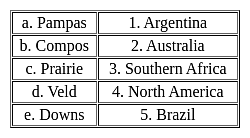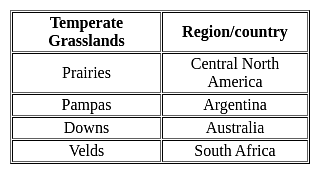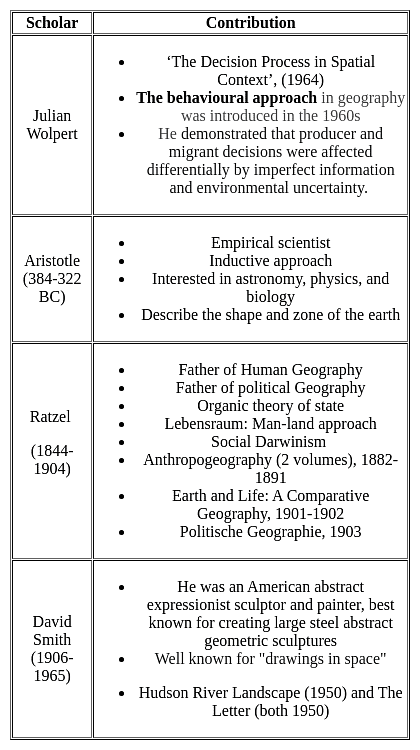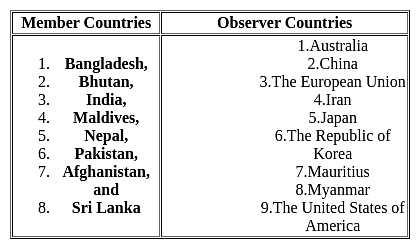MH SET Paper 2 Mock Test - 7 (Geography) - MAHA TET MCQ
30 Questions MCQ Test - MH SET Paper 2 Mock Test - 7 (Geography)
La Terre is authored by whom of the following?
______ is an Indian crewed orbital spacecraft of ISRO.
| 1 Crore+ students have signed up on EduRev. Have you? Download the App |
Given below are two statements. One is labelled as Assertion (A) and the other is labelled as Reason (R). Assertion (A): Anti-cyclone leads to violent thunderstorms.
Reason (R): Anti-cyclones have high pressure at its centre.
Select the correct answer from options given below:
Statements (A) and (B) are the main features of which of the following continents?
(A) The Continent is bound by oceans and seas on all sides.
(B) Tropic of Cancer, The Equator and Tropic of Capricorn pass through this continent.
In the history of India population, which duration period is referred to as 'A great leap forward'?
a. Generally results from the presence of joints and fractures
b. The arrangement of the channels is such that the principal tributary streams are parallel and very long.
c. Common in areas with parallel fractures or faults.
d. Characterised by right-angle bends.
Which of the above statements are correct?
Consider the following statements:
1. Biogas is produced from the breakdown of Organic Matter by Viruses.
2. Distillation Process is used to refine Crude Oil into numerous products.
3. China is the largest producer of bauxite in the world.
Which of the statements given above are incorrect?
"Maps are the graphic representations of the surface of the earth" who stated that
Which one of the following pairs is NOT matched correctly?
(i). Political maps show the geographical boundaries between countries, states, districts etc.
(ii). Physical maps have green to brown and grey colour scheme for showing elevation.
(iii). Shallow water body is shown with light blue colour
(iv). Cities and roads are not shown in physical map
Assertion (A): Mackinder’s theory of Heartland put forward a key formula “who rules Europe, commands the Heartland; who rules Heartland, commands the World Island; who rules the World Island command the world.”
Reason (R) : Mackinder’s formula offered Stalin’s strategy for territorial expansion and international supremacy.
Assertion (A)- The forest resources are unevenly distributed in India.
Reason(R)- Forest cover must be kept in check regularly.
Choose the correct option:
Which of the following groups of countries is the participant member of South Asian Association for Regional Cooperation (SAARC)?
Given below are two statements. One is labelled as Assertion (A) and the other is labelled as Reason (R).
Assertion (A): Development in ICT has led to increase in technical field of education in India.
Reason (R) : There has been increase in investment in ICT sector in India.
Select the correct answer from options given below:
Match the List-I with List-II
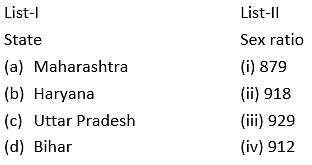
Choose the correct option:
“Intelligent participation in any discussion requires a knowledge of map of the world” – said by
Identify the INCORRECT statement(s) (S1, S2, S3) pertaining to the Vector data Model in GIS.
S1 : Topology is static and any updation /editing of vector data requires re-building of topology.
S2: Accurate geographic location of data can be maintained.
S3 : Continuous data like elevation data can be effectively represented in vector form.
Which of the following is/are true about the Amazon basin?
(A) The river Nile flows through this region.
(B) Both days and nights weather is almost equally hot and humid here.
(C) At night, the temperature goes down, but the humidity remains high.
Choose the correct option.
Match List-I with List-II and select the correct answer from the codes given below :
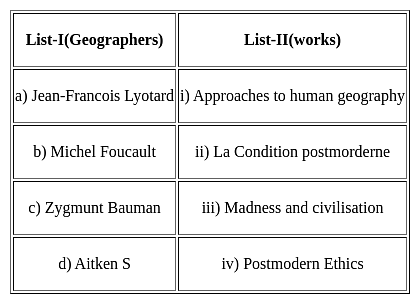
Choose the correct option from below:


